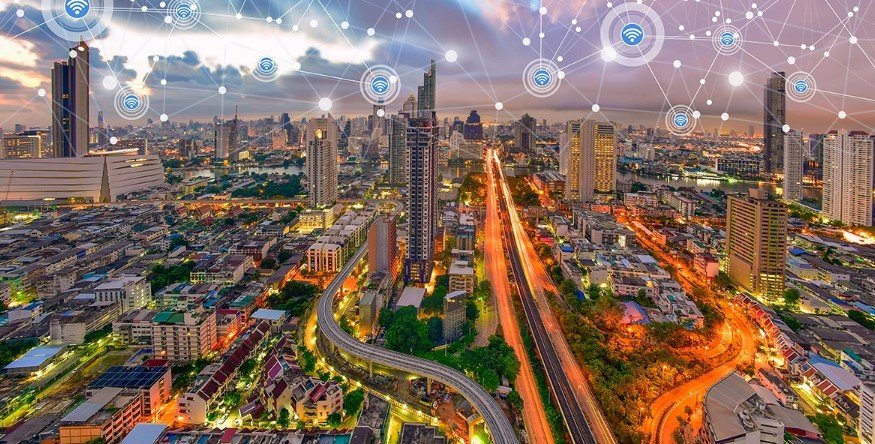The urban landscape is evolving rapidly, with cities transforming into smart ecosystems that leverage technology to enhance the quality of life for their residents. As populations grow and urban areas become increasingly congested, the concept of smart cities has emerged as a promising solution to address challenges related to sustainability, mobility, and resource management. By integrating the Internet of Things (IoT), data analytics, and innovative design, smart cities aim to create a seamless urban experience that benefits citizens, businesses, and the environment alike.
Understanding Smart Cities
Smart cities can be defined as urban areas that utilize interconnected technology to streamline city functions, improve service delivery, and engage with residents effectively. This can include everything from smart traffic management systems that reduce congestion and improve transportation efficiency, to intelligent waste management solutions that optimize resource allocation and promote recycling. By harnessing real-time data, smart cities can respond proactively to the needs of their inhabitants, creating a more responsive and efficient urban environment.
The Role of Technology in Smart Cities
Technology is the backbone of smart cities, enabling various applications that contribute to their success. The integration of sensors and IoT devices allows for the collection of vast amounts of data, which can be analyzed to make informed decisions. For example, smart streetlights equipped with sensors can adjust their brightness based on pedestrian activity, conserving energy and reducing costs. Moreover, traffic cameras and analytics can provide real-time updates on congestion levels, allowing for more efficient routing of public transport and emergency services.
Additionally, cloud computing plays a significant role in providing a centralized platform for data management. This enables collaboration between different sectors—such as transportation, health, and public safety—allowing for a holistic approach to city planning and management. With the rise of 5G technology, the speed and reliability of communication between devices and systems will improve, further enhancing the capabilities of smart cities.
Sustainability and Environmental Impact
One of the primary goals of smart cities is to enhance sustainability and address environmental concerns. Traditional cities often face challenges related to energy consumption, waste generation, and pollution. However, the smart city framework offers innovative solutions to these issues. For example, smart grids optimize energy distribution and usage, allowing for the integration of renewable energy sources while minimizing wastage.
Moreover, smart water management systems can monitor water usage patterns, detect leaks, and ensure the efficient delivery of this critical resource. By implementing green building technologies and promoting urban green spaces, smart cities can also combat the urban heat island effect, improving air quality and residents’ overall well-being.
Enhancing Mobility and Transportation
Transportation is a key focus area for smart cities. Urban mobility is often hindered by traffic congestion and inadequate public transport options, which can lead to detrimental effects on residents’ quality of life. Smart cities employ technology to enhance transportation systems, making them more efficient and user-friendly. For example, apps that provide real-time information on public transport schedules and occupancy levels can help citizens make informed decisions on their travel plans.
Furthermore, smart traffic management systems can analyze real-time traffic data to dynamically control traffic signals, improving the flow of vehicles and reducing commute times. Encouraging the use of electric vehicles and implementing charging infrastructure also play a crucial role in modernizing transportation while reducing harmful emissions.
Engaging Citizen Participation
A critical aspect of smart cities is the emphasis on citizen engagement. By leveraging technology, cities can create platforms for residents to communicate with local authorities, report issues, and provide feedback on city services. This participatory approach fosters a sense of community and ensures that the development of smart city solutions aligns with the actual needs of the residents.
Additionally, smart cities can implement educational programs that promote digital literacy and encourage residents to embrace technology. Access to training workshops and resources can empower citizens, allowing them to take an active role in shaping their urban environment.
Challenges and Considerations
While the rise of smart cities presents exciting opportunities, it also poses challenges that must be addressed. Privacy concerns regarding data collection and surveillance are paramount; residents must trust that their personal information is handled securely and ethically. Engaging citizens in discussions about data usage and creating transparent policies can help alleviate these concerns.
Moreover, the digital divide remains a significant hurdle; not all residents may have equal access to the technology required to participate in the smart city framework. Initiatives that promote equitable access to digital resources are essential to ensuring that smart cities benefit all citizens, regardless of socio-economic status.
The Future of Smart Cities
The future of urban living is undoubtedly intertwined with the evolution of smart cities. As technology continues to advance, the potential for innovation within urban environments will expand, opening up new avenues for addressing contemporary challenges. From improving public health and safety to enhancing infrastructure resilience in the face of climate change, smart cities can be at the forefront of crafting sustainable, livable cities.
Governments, private sectors, and citizens alike must collaborate to realize the full potential of smart cities. Building cross-sector partnerships and fostering innovative solutions through research and development will be key in driving this transformation. As urban areas continue to grow, the shift toward smart cities represents an essential step forward in designing a more connected, efficient, and inclusive future for all.
In conclusion, as we stand on the brink of this urban revolution, the rise of smart cities offers a vision of sustainable living that is not only technologically advanced but also deeply human-centered. By embracing the elements of connectivity, resilience, and citizen engagement, we can ensure that the cities of tomorrow are designed for everyone. Let us work together to create smarter, more livable cities for a better future.
